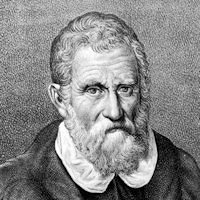
|
Some Common Myths Thought to be True - Myth 8
Myth 8: Marco Polo Imported Pasta from China
There is a legend that Marco Polo imported pasta from China which originated
with the Macaroni Journal, published by an association of food industries with
the goal of promoting the use of pasta in the United States. Marco Polo
describes a food similar to "lasagna" in his Travels, but he uses a term with
which he was already familiar. Durum wheat, and thus pasta as it is known
today, was introduced by Arabs from Libya, during their conquest of Sicily in
the late 7th century
|
| Marco Polo | |
|
In 1269, they returned to Venice to meet
Marco for the first time. The three of them embarked on an epic journey to
Asia, returning after 24 years to find Venice at war with Genoa; Marco was
imprisoned, and dictated his stories to a cellmate. He was released in 1299,
became a wealthy merchant, married and had three children. He died in 1324, and
was buried in San Lorenzo.
|
|
| ⇦ Back to Myth 7 Return to Myth Choices Page 1 On to Myth 9 ⇨ | |